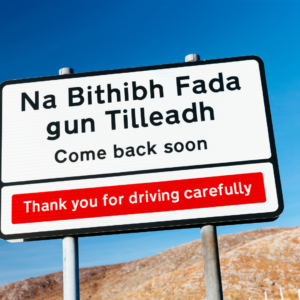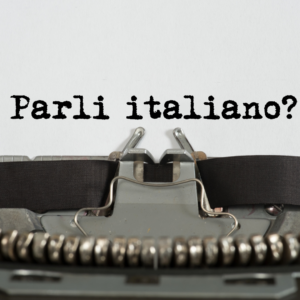In searching for the next topic for Native American Heritage Month, I came across a reference to the importance of language to native speakers. That resonates with me, as years ago, I began learning Scottish Gaelic. With a daughter who did Scottish Highland Dance and played bagpipes and a son who played the fiddle, I thought it would be fun to learn the language.
However, the devastating impact of losing one’s language soon became apparent to me. And learning the language of my ancestors took on a whole new meaning. So, when I saw that article on preserving Native American languages, it struck home.
When we are chatting with our friends, do we realize how much of our culture is tied up in those words? Our worldviews, belief systems, values, cultural identities, and history are tied up in our language. It is how we express who we are. And when a language dies, a bit of that heritage dies with it.
How can so much be revealed by chatting with others? A simple example of this concept is the idea of ownership in Scottish Gàidhlig (Gaelic). Our modern concept of “mine” would be foreign to speakers in the past, and this is reflected in their language. To them, ownership was not absolute, and things were often communally based or held in trust rather than considered possessions. In their culture, everything except family members and their own body parts were transitory. Words like mo (my) and do (your) are creeping into the language with greater frequency, but in the past would be limited to things like mo mhathair, or my mother. Rather than ‘my cat,’ the Gaels would say “tha cat agam,” roughly translating to “I have a cat.” Their understanding was that they did not possess it, and it may not be with them tomorrow. An taigh agam would mean the house that I have. As many times as we’ve moved, I realized the homes I lived in would not be mine for long. And how many cars have I “owned” as we relocated?
I hope that gives you a simple sense of how a cultural belief can be wrapped up in the language and how vital it is to keep it alive. Our language is our unique way of defining social roles and relationships, expressing our beliefs, and the way in which we interpret the world around us.
This same is true for the Native Americans. Taking this a step further, one’s language contains the accumulated knowledge of their people over generations. For example, specific indigenous words might have been used to identify a plant and its medicinal value. This information was often passed down orally through the generations, offering a deeper understanding of their world. Today, much of this information is lost.
Studies have shown that in areas where efforts have been made to preserve the language, mental health is improving by reinforcing pride and self-esteem. This is especially true among generations who feel separated from their roots.
My father-in-law was a first-generation American. His parents immigrated from Italy. When Dave took a job in Naples, Italy, I asked his father to teach me some Italian. He looked at me with a sad expression and told me his parents would not allow the four sons to speak anything except English so they would fit in. It seemed such a loss to me, and I wonder if he felt it, too.
Today, many programs are being developed to maintain indigenous languages here in the United States. Community-led initiatives are being developed to restore the dignity of tribal members. Some local governments recognize these languages as official and ensure that resources are available in them.
These programs realize it is more than just saving words. It is about preserving heritage, ensuring respect, and safeguarding cultures and ways of life. Because of the effects of colonization or forced assimilation, many of these languages have disappeared or are in danger of being lost. Instead, I believe we should be honoring not only our own heritage but cherishing that of others.

Great article, very insightful, as always.